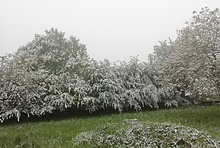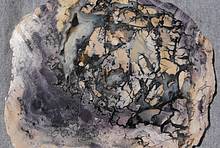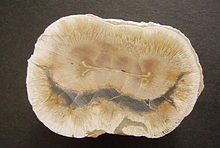Home PageAbout MindatThe Mindat ManualHistory of MindatCopyright StatusWho We AreContact UsAdvertise on Mindat
Donate to MindatCorporate SponsorshipSponsor a PageSponsored PagesMindat AdvertisersAdvertise on Mindat
Learning CenterWhat is a mineral?The most common minerals on earthInformation for EducatorsMindat ArticlesThe ElementsThe Rock H. Currier Digital LibraryGeologic Time
Minerals by PropertiesMinerals by ChemistryAdvanced Locality SearchRandom MineralRandom LocalitySearch by minIDLocalities Near MeSearch ArticlesSearch GlossaryMore Search Options
The Mindat ManualAdd a New PhotoRate PhotosLocality Edit ReportCoordinate Completion ReportAdd Glossary Item
Mining CompaniesStatisticsUsersMineral MuseumsClubs & OrganizationsMineral Shows & EventsThe Mindat DirectoryDevice SettingsThe Mineral Quiz
Photo SearchPhoto GalleriesSearch by ColorNew Photos TodayNew Photos YesterdayMembers' Photo GalleriesPast Photo of the Day GalleryPhotography
╳Discussions
💬 Home🔎 Search📅 LatestGroups
EducationOpen discussion area.Fakes & FraudsOpen discussion area.Field CollectingOpen discussion area.FossilsOpen discussion area.Gems and GemologyOpen discussion area.GeneralOpen discussion area.How to ContributeOpen discussion area.Identity HelpOpen discussion area.Improving Mindat.orgOpen discussion area.LocalitiesOpen discussion area.Lost and Stolen SpecimensOpen discussion area.MarketplaceOpen discussion area.MeteoritesOpen discussion area.Mindat ProductsOpen discussion area.Mineral ExchangesOpen discussion area.Mineral PhotographyOpen discussion area.Mineral ShowsOpen discussion area.Mineralogical ClassificationOpen discussion area.Mineralogy CourseOpen discussion area.MineralsOpen discussion area.Minerals and MuseumsOpen discussion area.PhotosOpen discussion area.Techniques for CollectorsOpen discussion area.The Rock H. Currier Digital LibraryOpen discussion area.UV MineralsOpen discussion area.Recent Images in Discussions
Mineralogical ClassificationDump grown minerals
22nd Mar 2016 15:30 UTCReiner Mielke Expert
22nd Mar 2016 15:36 UTCJolyon Ralph Founder
22nd Mar 2016 18:47 UTCRonald J. Pellar Expert
22nd Mar 2016 19:00 UTCDavid Von Bargen Manager
22nd Mar 2016 19:44 UTCJolyon Ralph Founder
Except this is not defined anywhere :)
22nd Mar 2016 19:48 UTCJolyon Ralph Founder
For example, this was obviously a last-thing-on-a-Friday-afternoon approval by the IMA:
http://www.mindat.org/min-7371.html
22nd Mar 2016 20:12 UTCDavid Von Bargen Manager
http://rruff.info/doclib/cm/vol33/CM33_689.pdf
Chemical compounds formed by the action of geological processes on anthropogenic substances have on
occasion, been accepted as minerals (e.g., the Laurium "minerals" formed by the reaction of seawater with ancient
metallurgical slags). However, in the modem era when many exotic materials are produced the possibility arises
that such substances can be placed in a geological environment to produce reaction products that might otherwise
qualify as new minerals. The CNMMN has therefore ruled that, in future, chemical compounds formed by the
action of geological processes on anthropogenic substances cannot be considered as minerals.
Some chemical compounds formed by the action of geological processes on rocks or minerals that have been
exposed to such processes by activities of Man (i.e., mine openings, ore dumps, road cuts, etc.) have
been accepted as minerals in the past and, if the exposure was inadvertent i.e.,not done with the express purpose
of creating new minerals, then such products can be accepted as minerals. Chemical compounds caused by mine
fires are considered to be a special case, as it is not always clear whether there has been human involvement in
initiating the fue, and such substances are therefore not accepted as minerals
22nd Mar 2016 21:26 UTCReiner Mielke Expert
22nd Mar 2016 21:48 UTCJolyon Ralph Founder

22nd Mar 2016 22:12 UTCAlfredo Petrov Manager
22nd Mar 2016 22:14 UTCReiner Mielke Expert
I will do that and let you know what I find. I will also post some pictures shortly.

22nd Mar 2016 22:55 UTCRobert Land
Rob.
22nd Mar 2016 22:57 UTCReiner Mielke Expert

22nd Mar 2016 23:09 UTCAlfredo Petrov Manager
One other possibility that comes to mind is that some coloring matter was bleached out in the surface layer, rather than a new mineral having been added.
22nd Mar 2016 23:20 UTCReiner Mielke Expert
Note never try cleaning Cyrtolite zircon with hydrofluoric acid.
22nd Mar 2016 23:48 UTCPavel Kartashov Manager
-------------------------------------------------------
> Post mining minerals aren't necessarily considered
> valid minerals. It's a grey area.
So these chalcanthite http://www.mindat.org/photo-484302.html and brochantite http://www.mindat.org/photo-484305.html , http://www.mindat.org/photo-483361.html growing right now here http://www.mindat.org/photo-483359.html aren't valid minerals? And of course bonattiite in which this chalcantite was transformed in my case is invalid.
What about cyrtolite, it able to be ethed even in 1/2 diluted HCl.

23rd Mar 2016 00:17 UTCD Mike Reinke
If merely leaving something on/in the ground generated new minerals, the weathering of rock exposed in a land slide would do the same thing; It is all just weathering, right? Since the HF was thrown in the mix by a human hand, that changes everything. Now if cyrtolite zircon was exposed in a landslide, and then assaulted by conveniently nearby volcanic fumes, you might have a new mineral? Only not very much of it. Just musing...
Still, according to David's reference, the back yard product is an "equivalent." That sounds reasonable.
23rd Mar 2016 00:40 UTCJolyon Ralph Founder
If I go into a mine and take a piece of rock out, and leave it on the surface deliberately to weather into secondary "minerals" - these are NOT minerals.
But if I was a miner, and I'd been digging rock out of the ground and accidentally left something on the surface - then these ARE minerals.
To me this is a little strange. It's like saying that an animal bred in captivity isn't an animal because humans deliberately bred it.
Is there any other natural science where the intent of a person is a deciding factor in whether something is classified one way or another?
23rd Mar 2016 00:56 UTCReiner Mielke Expert

23rd Mar 2016 01:09 UTCAlfredo Petrov Manager
23rd Mar 2016 01:09 UTCDavid Von Bargen Manager
23rd Mar 2016 01:32 UTCDavid Von Bargen Manager
Physics:
Depending upon how you look at things, photons and electrons can be considered to either be a wave or a particle.
23rd Mar 2016 01:58 UTCReiner Mielke Expert
23rd Mar 2016 02:25 UTCJeff Weissman Expert

23rd Mar 2016 02:32 UTCAlfredo Petrov Manager
23rd Mar 2016 02:35 UTCJeff Weissman Expert
23rd Mar 2016 02:41 UTCJolyon Ralph Founder
Well, the crystals that are formed form due to natural processes, they're not carved from an amorphous block by man.
The issue here is not necessarily about intent to create fake minerals or not, but whether the environment that is created by intervention of man (deliberate or otherwise) replicates a natural process that is likely to have happened to the source material given enough time anyway - ie if the vein had eventually reached the surface through erosion. One could argue that a piece of the vein could somehow naturally get transported to a fumarole in Japan, but it's unlikely. (perhaps if two swallows were able to grasp it between them and carry it...)
So. coming back to the example, if I took a piece of ore out of the mine and left it on top of the spoil heap so that it can form nice secondary crystals that's every bit as much of a mineral as the piece just next to it that found its way there by accident - at least in my mind.

23rd Mar 2016 02:53 UTCAlfredo Petrov Manager
"Intent" should not be one of the considerations, as it is too often impossible to determine. We might then have to hold court cases and cross-examine witnesses to decide whether a crystal was a "mineral" or not? ...and still not know for sure. Absurd, so intent must be excluded from the classification, and the divisions in the classification must stand or fall on their level of "naturalness"/interventions regardless of the mental processes of the humans involved..
23rd Mar 2016 15:57 UTCPeter Cristofono
For example, if plants hybridize in a man-made garden, even if accidentally, the resulting cultivar is not considered a natural variety, even if it subsequently escapes into the wild and becomes established in "nature." The botanical name would still reflect its man-made origin.
In botany, a useful distinction is made between species/varieties that have a "natural" vs. "human-influenced" origin and it seems to me that it makes sense to maintain that distinction in mineralogy as well.
23rd Mar 2016 17:00 UTCDavid Von Bargen Manager
The ABA Checklist includes ABA-area breeding species, regular visitors, and casual and accidental species from other regions that are believed to have strayed here without direct human aid, and well-established introduced species that are now part of our avifauna. Species Total: 988
23rd Mar 2016 18:09 UTCRonald J. Pellar Expert

23rd Mar 2016 20:40 UTCRolf Luetcke Expert
On mindat there are a number of acanthite photos of the thin, elongated, platy crystals. In my collection I have often collected, broken up and mounted in perky boxes, silver and lead related minerals with silver content. After a few years of reexamining the specimens I have found the exact same acanthite bloom growing on underlying metallic minerals. This growth is definitely post mine since it was not there when I broke the specimen and put in into a box. It formed from the exposure to air and moisture in the air. I am sure this forms in the exact same way naturally in the host rock when earth movement takes place, fracturing the rock. Mine grew in the box. Same mineral, same process but I have seen this often and on my photos I state whether it was post mine or not, that may be the best way to identify these growths. I have wondered in the photos of acanthite with no such explanation if they were found this way or grew after they were mined?
Rolf Luetcke

24th Mar 2016 13:28 UTCDavid K. Joyce Expert
I think that it is useful to know what post mining mineral/crystal growths exist at any particular mine or occurrence, if for no other reason, so that we know they exist and so that we don't mix them up with the minerals that actually resulted from the natural geological processes that were not influenced by the hand of man.
David KJ
24th Mar 2016 18:18 UTCRonald J. Pellar Expert

15th Apr 2016 09:48 UTCishwar mining
15th Apr 2016 18:34 UTCRob Woodside 🌟 Manager
6th May 2016 20:50 UTCŁukasz Kruszewski Expert
6th May 2016 20:57 UTCŁukasz Kruszewski Expert

7th May 2016 01:52 UTCAlfredo Petrov Manager
Currently, if a mineral is accepted "under false pretenses", the only way to get it off the list again is to go through the cumbersome discreditation procedure, which few academics will bother doing - It's time-consuming and there is not much academic glory to be gotten. So those systematik collectors who worship the list remain forever with silly non-minerals on their ever-lengthening want lists.
7th May 2016 15:15 UTCŁukasz Kruszewski Expert

8th May 2016 01:23 UTCAlfredo Petrov Manager
But I don't disparage them; in fact I personally find them to be highly interesting and desirable. This "mineraloid", for example: http://www.mindat.org/photo-745768.html - is the most beautiful and interesting I've seen so far this year! But it's a "mineraloid", not a natural mineral.
8th May 2016 17:04 UTCŁukasz Kruszewski Expert




Mindat.org is an outreach project of the Hudson Institute of Mineralogy, a 501(c)(3) not-for-profit organization.
Copyright © mindat.org and the Hudson Institute of Mineralogy 1993-2024, except where stated. Most political location boundaries are © OpenStreetMap contributors. Mindat.org relies on the contributions of thousands of members and supporters. Founded in 2000 by Jolyon Ralph.
Privacy Policy - Terms & Conditions - Contact Us / DMCA issues - Report a bug/vulnerability Current server date and time: April 23, 2024 21:48:23
Copyright © mindat.org and the Hudson Institute of Mineralogy 1993-2024, except where stated. Most political location boundaries are © OpenStreetMap contributors. Mindat.org relies on the contributions of thousands of members and supporters. Founded in 2000 by Jolyon Ralph.
Privacy Policy - Terms & Conditions - Contact Us / DMCA issues - Report a bug/vulnerability Current server date and time: April 23, 2024 21:48:23












